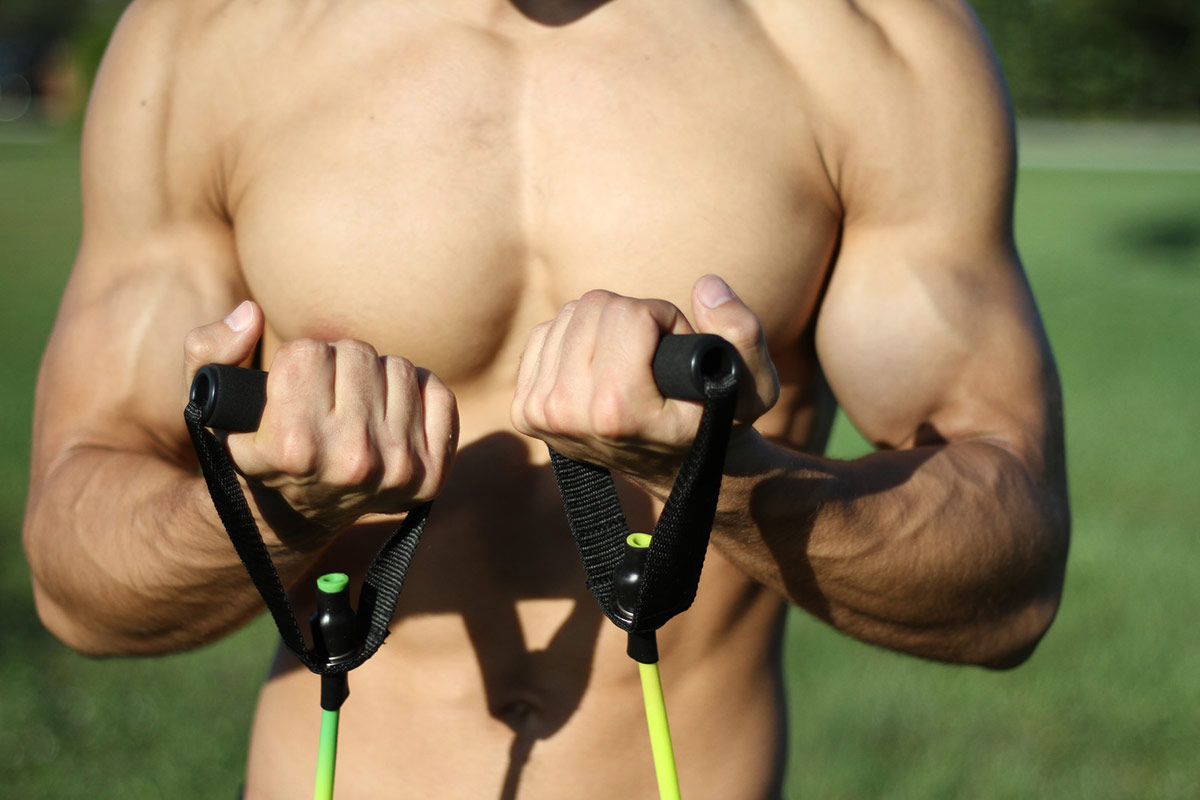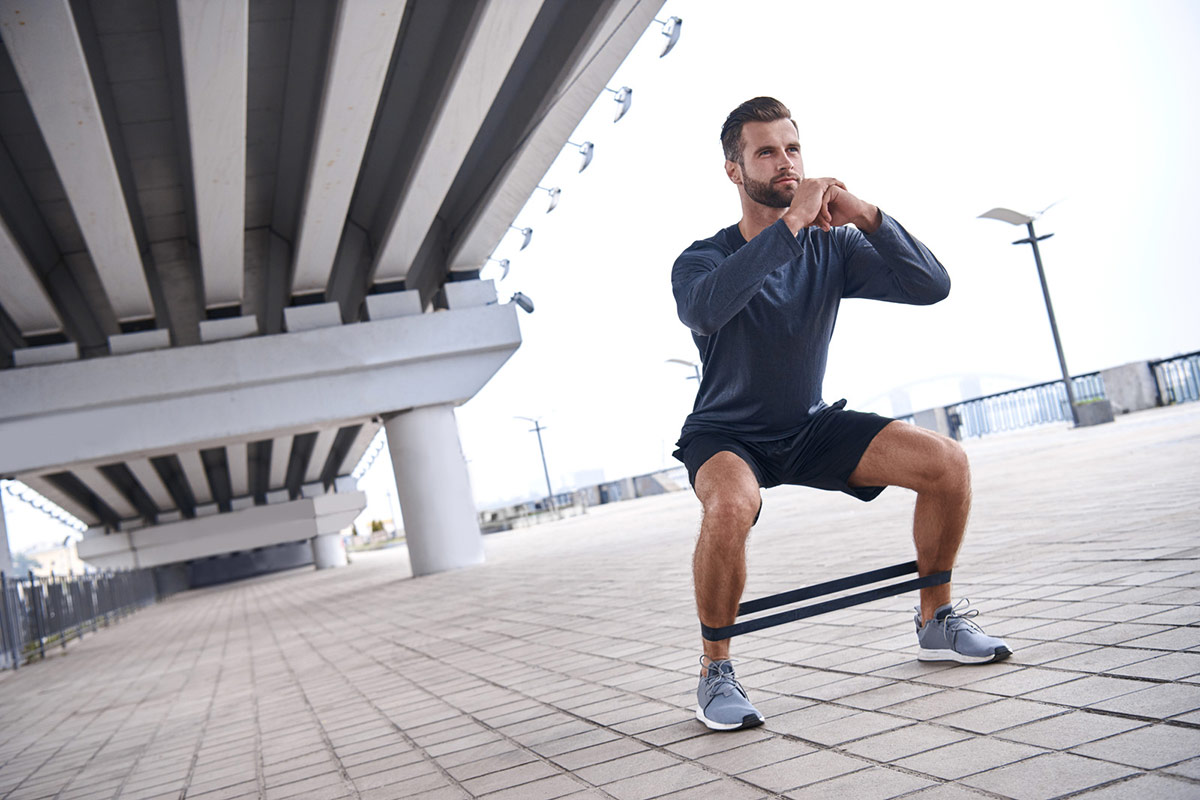Table of contents
Used properly, some of these elastic bands that are made of latex, plastic or fabric, allow for low impact workouts that are easy on the joints. Furthermore, exercise bands are great for improving balance, walking, flexibility, range of motion, cardio functioning and strength training depending on what exercise regime you choose.
You can work on the same muscles that you would work with when using free weights or the equipment in health clubs. With resistance bands, work out to improve your arms, legs, abs or buttocks. As for resistance bands vs. weights, these bands are a good alternative to dumbbells, for example, because they offer constant resistance.

© Can Stock Photo / Alexmillos
In using a dumbbell to do a bicep curl, you get more resistance on the upswing when you are working against gravity than you do on the downswing. With exercise bands, the resistance is constant and that means that more of your muscles are working during your exercise session.
Exercise bands are quite adaptable. They are easy to pack for travel. Depending on which type you are using, you can attach one to a door frame to perform pulldowns or triceps pushdowns or wrap one around a vertical pole to do chest presses. Put one around your ankles and choose an exercise to work on your glutes for more developed buttocks.
Standards for Resistance Band Sets
Resistance band sets for beginners contain simple, no-frills bands. Most are color-coded to represent the amount of resistance, and the colors and the resistance values vary by manufacturer. The loosest ones have the least resistance. So one manufacturer designates its bands as light, medium and heavy. Another might say that its green band is for 2 to 20 pounds of resistance; yellow, 20 to 30 pounds; red, 30 to 40 pounds; and black, 40 to 50 pounds.
Five Types of Resistance Bands
Last update on 2025-03-27 / As an Amazon Partner, I make a profit on qualifying purchases./ Images from Amazon Product Advertising API
Mini Bands
Though they are small, like other exercise bands, mini bands come in various thicknesses and grades of resistance. Use them for toning, warm ups, muscle strengthening and endurance as well as for improving stability. They have low impact on the joints. Commonly, they are put around ankles, wrists, knees, upper arms and thighs.

© Can Stock Photo / Sidelnikov
Figure-eight bands
Made of cylindrical tubes, they are shaped like a figure eight with a handle on either side. They work well with pulling and pushing exercises that target the upper and lower body. They help in achieving goals such as muscle tone and weight loss. These resistance bands also have a place in physical therapy and rehab.
Tube bands with handles
These pieces of fitness equipment look like jump ropes with pulleys attached to them as handles. Tube resistance bands are suited for working all the muscles in the body. They also help in burning fat and improving range of motion. Biceps curls and chest presses are just some of the exercises that athletic trainers use them for.
Large-loop bands
Looking like very long rubber bands, these versatile bands come in various widths. Use them to assist the body in doing pull ups or muscle ups or to give resistance in doing push ups.
Another use is for full-body workouts such as squats or shoulder presses. Physical therapists may decide to use large-loop bands to help patients recovering from leg, back or knee injuries. These bands also aid in helping people in rehab for a torn MCL or ACL. Another purpose they serve is in helping people to resume their lives following knee replacement surgery.
Therapy bands
These thin bands, which commonly do not have a loop, are used by physical therapists and others. Also called light therapy resistance bands, they help injured people regain strength. One application is in rotator-cuff rehab. More uses include applications in exercising during warm-ups and cool downs and in toning muscles. When a low-impact routine for senior citizens is needed, many fitness experts suggest therapy bands.
Some exercise band sets come with handles, foot straps and door anchors. How you use them depends on your fitness level and goals as you keep safety and know-how in mind. Using exercise bands can offer the same wow factor as working out using equipment at a fitness center. Resistance bands are also available at many of these athletic centers, where personnel are on hand to give instruction on how to use them.
Choosing Resistance Bands and Exercises
Some fitness experts suggest that senior citizens or people new to exercise bands start with the least resistance and then after doing 12 or 15 reps without feeling tired over a number of days move to the next level. Most beginners start with a set of starter mini bands.
Keep in mind what body parts you want to work on and your skill level, and then search for guidance in how to achieve your goals. Books, classes, online articles and online videos can show you how to use resistance bands. Since many manufacturers sell them, read descriptions and reviews before making a purchase.
